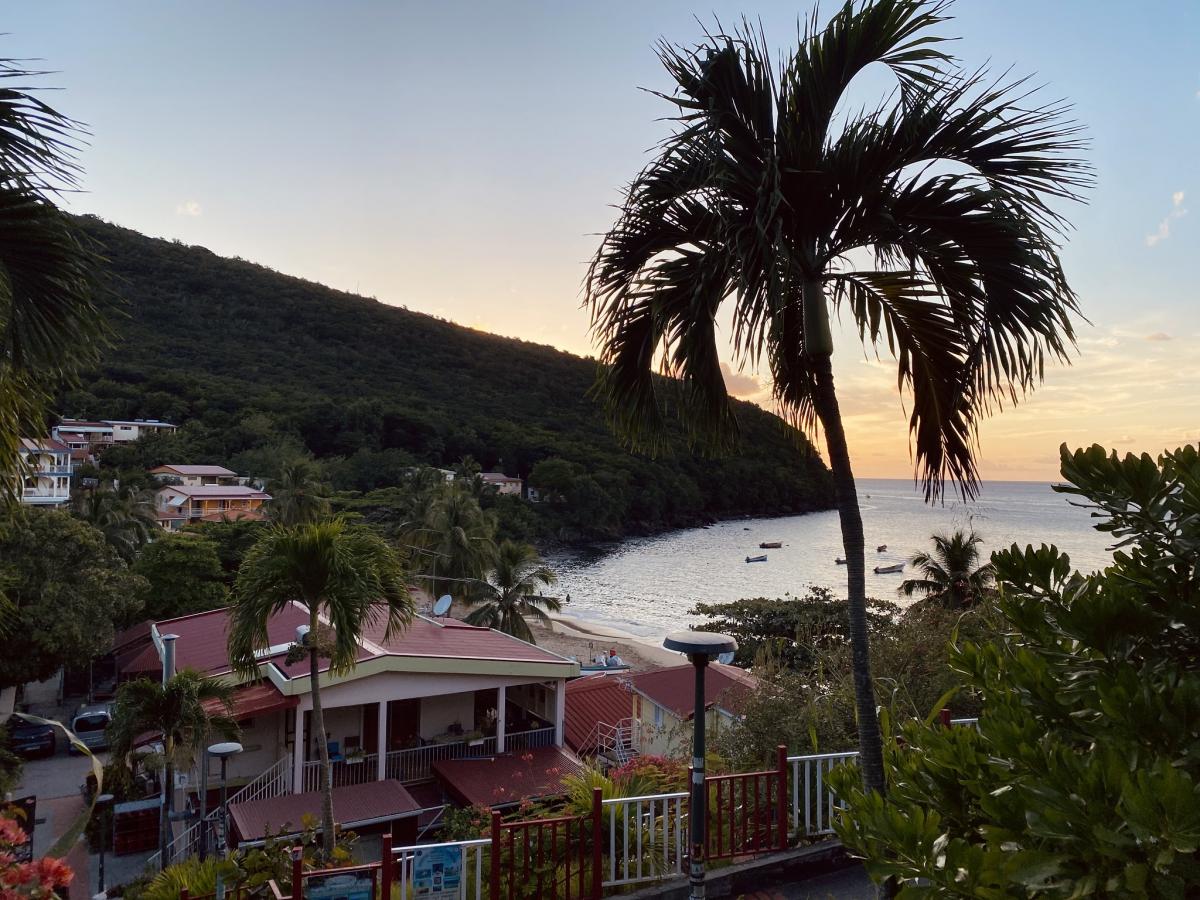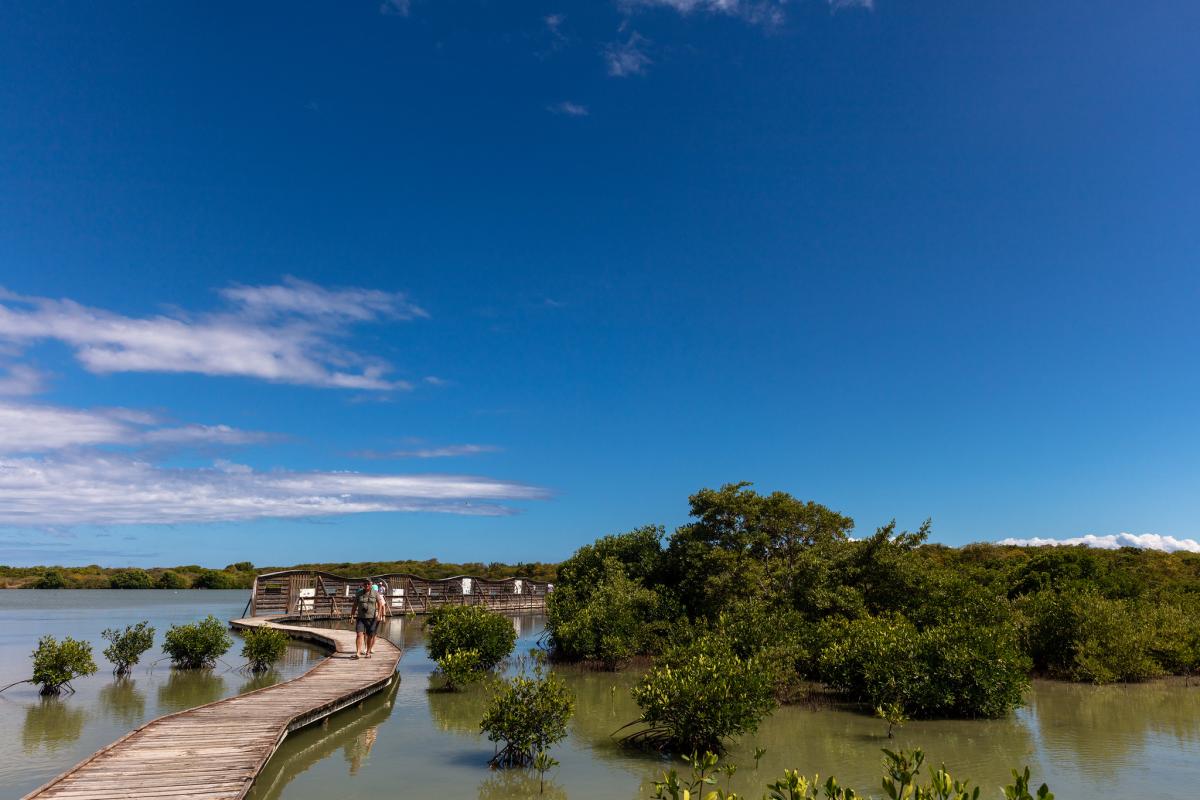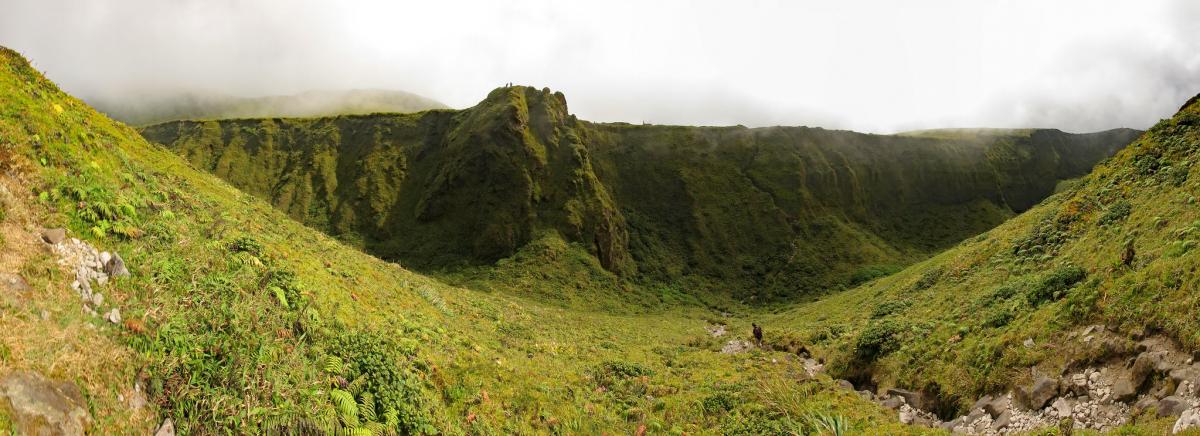Darrell, AB2E will be active as TO3E from Martinique Island, IOTA NA - 107, 20 - 27 May 2025.
He will operate on HF Bands, including activity in CQ WW WPX CW Contest, 24 - 25 May 2025.
Recent DX Spots TO3E
QSL via home call direct or LOTW.
The island of Martinique
Tropical Martinique, located in the Lesser Antilles belt of the Caribbean Sea, is an overseas department of France (like Guadeloupe and French Guiana). Although it is a relatively small island, its surface is very diverse: 1060 km2 (70 km long and 20 km wide) contain coastal lowlands with mangroves, rainforest covering the small mountain range of Piton du Carbet, coastal reefs and volcanic massifs.
In the north of the island rises the active volcano Montagne Pelée (1,397 meters), which is also the highest hill on the island. As you progress from the coast through the foothills to the highest parts of the volcanic hills, several zones of vegetation can be found. At first it will be cacti and acacias, and at the end it will be a rainforest with mature trees.
What is amazing in Martinique are the strangest shaped plants and the local birds. Hummingbirds are found here on almost every red flower.
 Martinique. Author - Magda.
Martinique. Author - Magda.
Summer 365 days a year
Martinique has a slightly tropical climate, with alternating two periods of rain and drought. The average temperature is around 25...30 °C all year round, the sea temperature is between 25 °C and 28 °C and the humidity is between 77% and 85%. There are basically two alternating seasons: February to June is the dry season and July to January is the rainy season. Heavy rains and the possibility of cyclones in the area are usually observed from September to October.
Pristine nature and a popular Caribbean beach
The heart of the island is the Buliki neighborhood. The Rivière Blanche River flows here and this beautiful reserve plays a very important role in Martinique.
The island offers an unusual variety of landscapes: coasts with fine sand and turquoise water, tropical forests. In the south there are beautiful beaches and huge sugar cane plantations. In the list of the most beautiful bays in the world you will certainly find Flaman. The view of idyllic beaches and wooded coastline will be one of the most beautiful moments of your Caribbean vacation.
Les Salines is a famous beach in Martinique, located in the south of the island. Tourists are lured here by a long arc (more than 1200 meters) with fine sand that slowly descends into the turquoise sea. The beach is located in the southern part of Martinique and on weekends is always crowded with tourists. Not far from this attraction is a salt lake with the same name.
 Martinique. Author - Marc Arlaud.
Martinique. Author - Marc Arlaud.
Mont Pelée Volcano
One of the most interesting and informative walks for travelers is to climb the active volcano and the highest point of the island Montagne Pelée (1397 m). This effusive geological formation, which is often hidden behind clouds a few kilometers north of the town of Saint-Pierre, is not difficult to conquer. Several paths, marked on tourist maps, lead to its summit.
Anyone who wants to get acquainted with the attraction should first visit the Volcanological Museum in Saint-Pierre. It is a small house, inside of which everything that happened here a hundred years ago is very vividly and dramatically represented. Although the volcano was making itself known (crater ash, boiling springs and hot soil at the foot, weak earthquakes), the governor of Martinique, Louis Mutte, did not heed the warning and did not consider it necessary to evacuate the inhabitants. At 8 a.m. on May 8, 1902, there was a devastating explosion of an overheated volcano that was several times more powerful than the nuclear blast at Hiroshima. When arriving ships entered the harbor in the afternoon, they found wreckage of buildings instead of the usual sights. That day, 30,000 people died in St. Pierre, also called Caribbean Paris. Construction on the ruins of the city did not begin until 1904.
Remnants of the structures destroyed by the eruption can still be found today on most of the streets of St. Pierre, and its views before the destruction are captured in museum photographs.
Montagne-Pelais is now becoming a more attractive destination for tourists, and the region's authorities are keeping a close eye on it. The last town on the way to the foot of the volcano is Morne Rouge, which can be reached from St. Pierre in a few minutes. From here, a 5-kilometer access road leads to a parking lot and visitor center just below the hill. Once you reach this point, however, you still have to walk further. The way to the top takes only two hours and is an easy climb, where the only inconvenience is the scorching sun, from which there is nowhere to hide. The technically more difficult place to climb at the top is the descent from the crest of the old caldera just before the steep climb to the summit of Montagne Pelée.
Trace des Jésuites (Jesuit Route)
One of the many ways to experience the island's central mountain range, the Piton du Carbet, is to hike through the forest. The most famous, challenging yet interesting route in this direction is the Trace des Jésuites. Such a journey allows a good view of the tropical greenery. The starting point is visible from the main road and is marked by a signpost in the form of a board with a painted path through the forest.
Just above the road, there is a great view to the north where the Montagne Pele volcano can be seen. If you walk calmly, the journey will take about three hours. The trail consists of two parts, separated by the Rive du Lorrain River. First, travelers will have to descend to the river, then climb the Piton-du-Carbet hills. The climb is often steep, and wet tree roots make the procedure even more difficult, although the path is relatively short, only six kilometers.
 Martinique. Author - Thomas Jundt.
Martinique. Author - Thomas Jundt.
Caravelle Peninsula
For those who are tired of lush and humid forests, the Caravelle Peninsula on the east coast of Martinique is a more arid climate and less green vegetation due to the proximity of the sea. You can get here by turning off the main road leading from La Trinité to one of the most beautiful beaches of Martinique, located near the village of Tartar.
The most important historical attraction of Caravelle are the ruins of Dubuc Fort, which is located on the eastern side of the peninsula. The 18th century fort is erected right on the mangrove-lined coastline and was a sad witness to the transportation of black slaves to North America in the past.
Rocher du Diamant
Another amazing place in Martinique is the Black Rock, which is marked on the map as Rocher du Diamant. It is home to many birds and a suitable spot for divers. You can see this landmark from the village of Le Diamant, which is on the same level as it. The 175-meter-high black rock rises two kilometers from the coast.
For a long time, it was one of the most important points on the route between Martinique and St. Lucia. According to unconfirmed reports, the rock was the subject of a dispute between the French and the British because of its position. In 1804 (1800?) this part of the island was occupied by Her Majesty's troops, who defended the rock for 11 long months. There was no way theFrench could remove the enemy until one general had an interesting idea. He sent a boatload of rum to the shore. When the men of war were drunk, the French captured Diamond Rocher. Even so, the British still consider the Black Rock their historic territory.
Other places of interest on the island
In the southeast of the island you can find mancinella trees, which are considered the most poisonous in the world. Their sap in contact with the skin provokes the formation of blisters, and the fruit after eating causes vomiting, diarrhea and even leads to fatal dehydration. This is why such vegetation is marked with a red ribbon on the island.
North of Saint-Marie is one of the keys to learning about Martinique 's culture and history, the Museum of Rum, which is produced at Saint-James Plantation. Although this drink is found everywhere, it is hardly ever exported to other countries, so it is unlikely to be tasted outside the island.
A few facts and tips
- Martinique 's official currency is the euro.
- The capital and largest city of the island is Fort-de-France.
- When you are not in the rainforest, take care to protect yourself from the strong sun. Here, you can use a variety of sunscreen as well as hats.
- The most common language in these territories is French, also English and Creole dialects are spoken here.
- The most suitable period for tourist trips to Martinique (with minimum precipitation) is from January to April.

